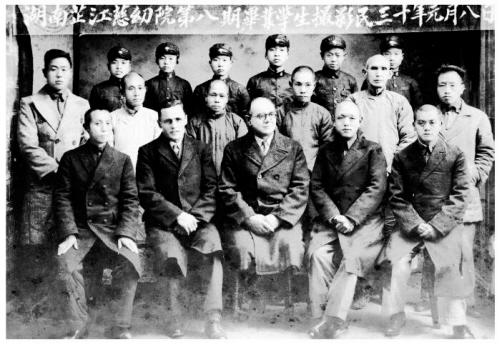Local newspaper in Changsha reported that during the period of Anti-Japanese War, German priests set up a shelter in Zhijiang County, Huaihua city, Hunan province to help 550 Chinese orphans.
On August 14, the A06 edition of Changsha Evening News reported this and said, "The Zhijiang archive has released the relevant information for the first time that showed a warmth during the war."
"When the country of Germany belongs to the enemy, but some German priests who still retain the humanitarian spirit find themselves concerned about the Chinese people."
Zhijiang archives of the historical data show that in 1903, the German Minister Kang arrived at Zhijiang. In September 1922, he founded the first infant school in Zhijiang to adopt orphans. After the outbreak of the Anti-Japanese War, another German priest acted as bishop in the Zhijiang infant school which also became a refugee camp in China.
The refugees who came to Zhijiang came from such as Nanjing, Jiangsu, Zhejiang, Henan, Anhui, Jiangxi and other places. According to archives of the Republic of China, in June 1941, the Zhijiang county amounted to almost 2,777 refugees. Among them distributed around 1,700 people, 260 people who were in the shelter were introduced professions as an extension to fend for themselves for about 3 months worth of supplies for a total of 471 people. In the process, the Zhijiang infant school adopted550, orphansduring the war, at the same time also foundedtextile refugeesand used the school as a hospital rescue and nurse the wounded.
Introduced by the Christian Church in Hunan provincein 1903, the German Minister Kang (KampannF · E) with the Chinese missionaries brothers Xiao from Changsha came to preach in Zhijiang. October of the same year, the German missionary Su Bai (Sshappc) and a partial root also arrived in Zhijiang toset up a Gospel Church in Tung Street of Zhijiang. In 1905, Kang came back and the work of the Church became the responsibility of the Priest Lai Yongguang.
In 1912, Changsha sent a Pastor (HumanBeker) to Zhijiang and in 1914, a German priest came from Hongjiang to Zhijiang to set up a Zhijiang Parish. During then, a Germany missionary (Arentt) came to Huang County Longxikou to establish branches. After the German Priest Bei left wife and son to serve the county he set up "camps" and organized the refugees in textile mills, then he went back to Zhijiang in 1917.
Later, Zhijiang increase Germany Vicar Lai Enguang, thus successively in Longxikou and other places to set up six points to increase to more than 300 believers while dopting the refugees, babies, baby and to set up a "kindness school." during the first war. In 1925, three sermon teams of the church accounted for 36 people. In 1941, there are branches including Zhijiang, Huaihua, Mayang, Qinyang, Huangxian, Zhijiang, a total of 6 counties, 2 provinces, a total of 22 branches, 14 points, and 2,788 believers, successively in zhijiang missionaries,priests and more than 20 missionaries from Germany, Britain, the United States, and Switzerland.
Because of Pacific War broke out in 1942, all German Pastors and Missionaries were sent to Yangshuo in Guangxi and Chongqing for monitoring. German missionary and doctor, Tang Shufang, was left behind in Zhijiang. The Church teachingtaken up by Swiss Pastor NieMengen and later on, by British minister from Guizhou.
In 1946, the Pastor Baoge came back to Zhi, and went to live in the United States in 1947 when allother missionaries and priests also have returned.










